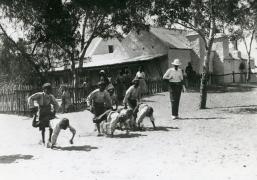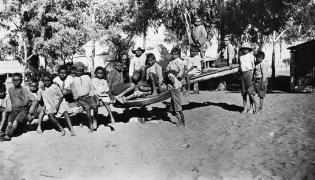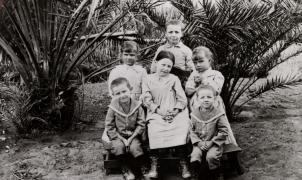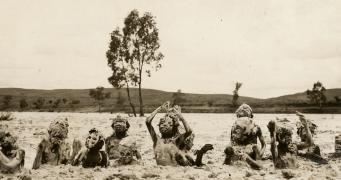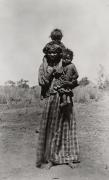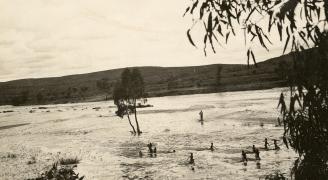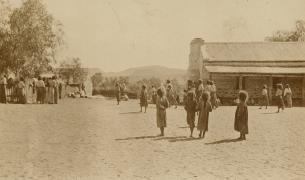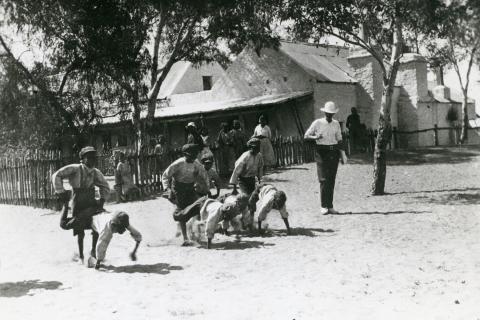For the children of Hermannsburg life was a combination of play, study and chores. Children attended class in the mornings and helped parents with chores in the afternoon. Sadly, in the early days of the mission young children were most vulnerable to European diseases and illness due to poor nutrition during periods of drought.
Several epidemics are reported in the mission records. In 1900, there was an outbreak of whooping cough. In 1919, Spanish influenza swept through Central Australia and, while Arrarnta elsewhere were affected, it did not reach Hermannsburg. The mission staff and residents were affected by scurvy during the drought of 1927-29 and over that period 85% of the Arrarnta children at the mission, along with several adults died.
Particularly during Carl Strehlow’s time, many children left the mission for short amounts of time to be with their families, travel to other communities and places and attend ceremonies.
Like children everywhere, they always found a way to create fun and laughter around the mission and family campsites and they are reported to have particularly enjoyed singing at church and school. The first lessons in the school building occurred on the 24 November 1880. The program at the school comprised bible history, reading, writing, geography and singing. By Christmas that year children could already sing Christmas carols at the Christmas Eve celebrations.
Throughout its history, the mission found opportunities to bring everyone together to celebrate and older people in Ntaria today remember, with fondness, the sports days where adults and children would join in a number of sports including novelty races.
By the 1960s, the school had evolved as an independent church school offering the standard curriculum set by the government for Aboriginal schools. Teachers were encouraged to learn Arrarnta language and children and parents were encouraged to write traditional stories to assist in the teaching of Arrarnta.
After the advent of ‘School of the Air’ in the 1950s, and up until 1968 there was a ‘White Correspondence School’ for the children of non-Indigenous staff. This was closed in 1968 when Hermannsburg became a multi-grade school. Graduating students went on to either the local post primary trade school or secondary school in Alice Springs or Adelaide.
Media
